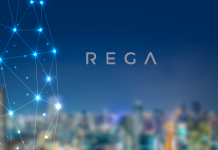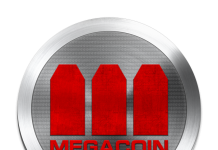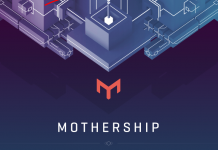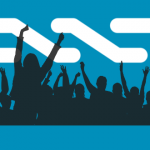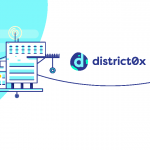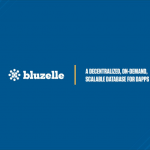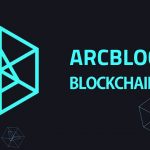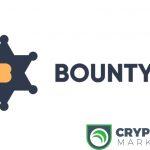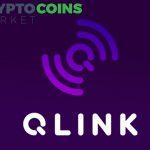A cryptocurrency is a form of money based on cryptographic methods. This cryptographic system allows a series of individuals who do not trust each other to share a common database. When using particular cryptographic methods, this database is called the blockchain. The blockchain reflects the real state of affairs even though the database is shared between different parties who do not know each other. This is the power of the blockchain.
The first cryptocurrency is Bitcoin. The original goal of Bitcoin was to create a “decentralized currency.” This means that there is no one force controlling the currency (in the US’ case, the Fed); Bitcoin would be of the people, for the people. As great an idea as this was, however, Bitcoin soon became controlled by an “oligarchy,” so to speak. A group of miners were fortunate enough to own expensive mining equipment that allowed them to control the supply and demand (aka the price) of Bitcoin. Some developers weren’t happy, so they struck out on their own.
Enter Decred! With Decred, governing control moves away from centralized authorities, such as developers and miners, and is given to the community of stakeholders. Decentralization struggles without decentralized governance; this is especially true when it comes to a rapidly growing global currency.
This is a great improvement from Bitcoin, but that’s not all Decred can do. What if Soni, a brilliant developer, has an idea that could revolutionize Bitcoin? Unfortunately there is no way for her to easily propose and help implement that idea in the current Bitcoin system. But because Decred believes their biggest strength is their community, they welcome Soni and her proposal. With help from other Decred community members, Soni’s idea flourishes, and Decred grows exponentially.
Top features
Hybridized consensus system
Decred uses a hybridized governance system, a combination of the Proof of Work (POW) system found in Bitcoin and Proof of Stake (PoS). PoS adds an extra layer of decentralization to Decred and allows users to vote on suggested network changes. Users can supply tokens rather than using computational power to participate in votes for protocol changes. The fundamental change was based on MC2 and proof-of-activity (PoA) by Iddo Bentov, Charles Lee, Alex Mizrahi and Meni Rosenfeld.
To become a voter, users must “stake,” or purchase voting rights in the form of “tickets,” at an average cost of 50 Decred tokens (DCR) per ticket, although this price fluctuates. Staked coins can be locked up for a period of up to 6 months.
The concept of hybridizing POW and PoS consensus mechanisms creates a stratification of consensus between POW miners and PoS miners. POW miners are needed to generate the blocks that build the blockchain and PoS miners are needed to ensure that POW miners create blocks that are consistent with the desires of the users of the currency. In the context of contentious issues like maximum block size changes, this gives a clear resolution to the dispute via the PoS voters. The PoS holders can force consensus changes by invalidating POW blocks that go against the new consensus rules, removing the incentive for POW miners to behave without regard for PoS holders.
A very rough analogy here would be that POW is to PoS as banks are to their depositors, so what this hybridization of POW and PoS has created is analogous to a bank that actually acts according to the will of its depositors. This substantially improves on the system we currently have in Bitcoin, where holders of bitcoin have no say in the consensus process.
Public proposal system
Decentralizing the larger-scale decision making is the first step of several towards making Decred into a robust and fully operational decentralized autonomous organization (‘DAO’). The next step in achieving this goal is the Public proposal system, an off-chain system where Decred users can submit proposals for future work to be performed by the development organization, Decred Holdings Group (DHG). Developers will then start work on decentralizing control of DHG funds, by creating a system based on stakeholder voting.
Hard fork voting
Hard fork voting lets stakeholders vote on major changes to the blockchain itself such as the block size or the algorithm used to determine Proof-of-Stake ticket prices. With this technology, voters (holders of Decred) will be able to weigh in on precoded upgrades such as SegWit, increased block sizes, anon among others. If these upgrades are voted in, the chain will automatically fork to accommodate the upgrades, without developer intervention. This is how governance should be.
Self-funded development
Decred has another major goal in mind. Bitcoin, because it was the first of its kind, had trouble getting public outreach and funding. Self-funded development through a 10% subsidy on block rewards allows deCRED to ensure the resources are available now and in the future to deliver the current vision of deCRED and allow it to adapt to future requirements. These funds are available to anyone who wishes to contribute towards development, not just a core team.
Decred (DCR)Token
Overview:
Current coin Value: $23.02
Market Cap: $128,250,121
Circulating Supply: 5,572,022 DCR
The network token, DCR, was introduced without having fundraised using the now highly popular Initial Coin Offering (ICO) model. The first 840,000 Decred native tokens, DCR, were “airdropped” to 3,244 recipients. The airdrop simply distributed tokens to participants who had registered.
There are currently 5.5 million coins in circulation out of a total 21 million possible coins in existence. The block subsidy works the same way as Bitcoin in the sense that newly minted coins are rewarded every few blocks. The difference is, rather than having 100% of the block rewards go to the miners, 60% go to the Proof of Work miners, 30% go to the Proof of Stake holders, and 10% go to the development organization (DHG) which will ultimately become a DAO.
Wallets
Online wallet. So that all Decred users could have access to a GUI regardless of platform, they have developed an online wallet service from BitPay’s Copay wallet and its dependencies. The wallet will allow for basic functionality such as sending and receiving Decred coins. For the more technically minded, there will also be a command line version of the Decred wallet.
GUI Wallets (bundled with dcrd/dcrwallet):
• Paymetheus - For Windows
• Decrediton - For macOS and Linux
3rd Party Wallets:
• Exodus - For Windows, macOS and Linux
Exchanges
You can buy or sell DCR at:
• Bittrex
• Poloniex
• Shapeshift (no account needed)
• Changelly (can buy with fiat; higher fees)
• Bisq (decentralized exchange)
Conclusion
Decred attempts to shift the traditional dominance that proof-of-work miners have over the network to a more harmonious relationship with other users of the software. It is through this relationship between miners and users that Decred believes an environment is created that makes sustainable funding for the development of the software possible.
A consensus rule supported by miners and users that makes funds available for the development of the software through its use frees current and future developers from obligations to outside parties and keeps them beholden only to their userbase. If users are unhappy with development, they finally have a means to communicate their discontent in a way that has effect through a vote in the blockchain. This sets the stage for a system of community-based open governance directly connected to developers.
[currencyprice currency1=”dcr” currency2=”usd,eur,btc”]
[currencygraph currency1=”dcr” currency2=”usd”]




